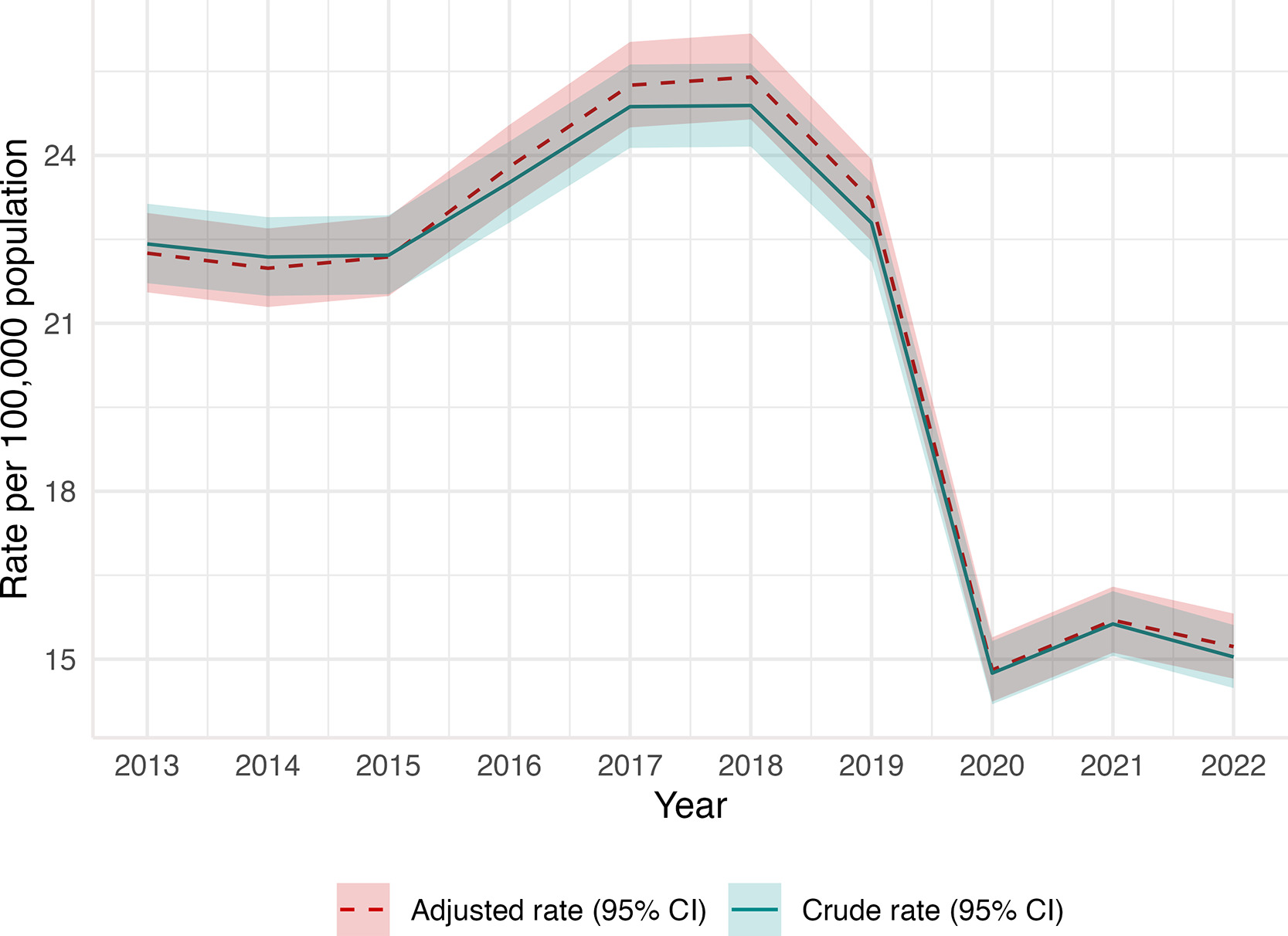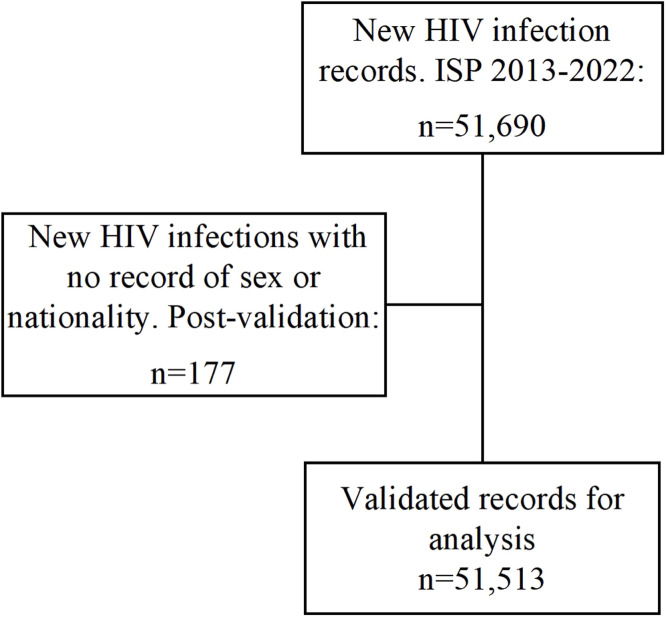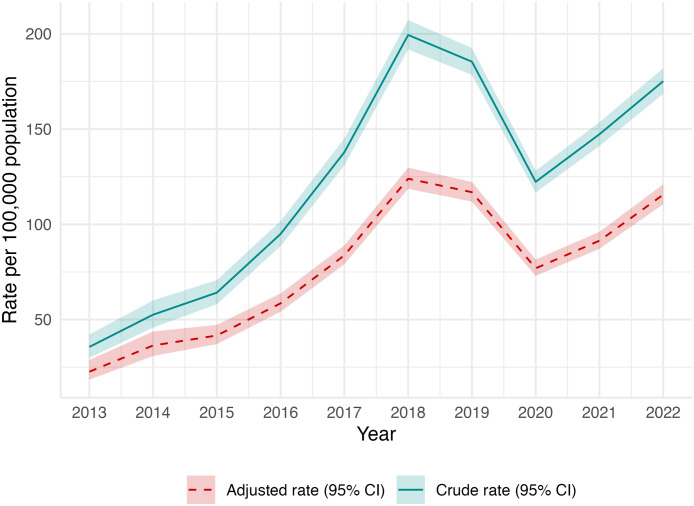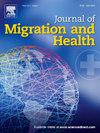Rate estimation and trend analysis of new HIV infections among the international migrant population in Chile from 2013 to 2022
IF 2.9
Q1 PUBLIC, ENVIRONMENTAL & OCCUPATIONAL HEALTH
引用次数: 0
Abstract
Background
International migrants are central to HIV research, but comparative data on their infection rates versus resident populations, including in Chile, are scarce. This study compares HIV incidence rates between international migrants and Chileans.
Methods
A longitudinal study was conducted. Crude and standardized rates of new HIV infections reported by the Institute of Public Health of Chile (ISP) were calculated for the period 2013 to 2022, using data from public and private health facilities nationwide. Population estimates for international migrants and Chileans were obtained from the National Institute of Statistics (INE) and the National Migration Service (SERMIG). Rates were adjusted for age and sex using the direct method.
Results
A total of 51,513 validated new HIV infections were analyzed, of which 14,936 (29.0 %) occurred in international migrants and 36,577 (71.0 %) in Chileans. International migrants showed an increase in incidence rates between 2013 and 2022 (adjusted rate from 22.6 [95 % CI: 18.3 – 27.0] to 115.6 [95 % CI: 110.5 – 120.7] new HIV infections per 100,000 population). Throughout the study period, the ratio of adjusted incidence rates between international migrants and Chileans increased from 1.0 [95 % CI: 0.9 – 1.2] to 7.6 [95 % CI: 7.2 – 8.0].
Conclusions
HIV incidence rates were higher in international migrants than in Chileans and increased over the study period. This may be influenced by various exogenous factors, including social determinants of health and the COVID-19 pandemic. It is crucial to focus on HIV diagnosis, prevention, and control strategies for international migrants in Chile.



2013 - 2022年智利国际移民人口艾滋病新发感染率估算及趋势分析
背景:国际移民是艾滋病毒研究的核心,但关于其感染率与常住人口(包括智利)的比较数据很少。这项研究比较了国际移民和智利人之间的艾滋病发病率。方法:采用纵向研究。智利公共卫生研究所(ISP)报告的2013年至2022年期间艾滋病毒新发感染率和标准化感染率是根据全国公共和私营卫生机构的数据计算出来的。国际移徙者和智利人的人口估计数来自国家统计局和国家移徙服务局。使用直接法根据年龄和性别调整比率。结果:共分析了51,513例HIV新发感染病例,其中国际移民14936例(29.0%),智利人36577例(71.0%)。2013年至2022年期间,国际移民的发病率有所上升(调整后的比率从每10万人新增艾滋病毒感染22.6例[95% CI: 18.3 - 27.0]增至115.6例[95% CI: 110.5 - 120.7])。在整个研究期间,国际移民和智利人之间的调整发病率之比从1.0 [95% CI: 0.9 - 1.2]增加到7.6 [95% CI: 7.2 - 8.0]。结论:国际移民的艾滋病毒感染率高于智利人,并且在研究期间呈上升趋势。这可能受到各种外部因素的影响,包括健康的社会决定因素和COVID-19大流行。重点关注智利国际移民的艾滋病毒诊断、预防和控制策略至关重要。
本文章由计算机程序翻译,如有差异,请以英文原文为准。
求助全文
约1分钟内获得全文
求助全文
来源期刊

Journal of Migration and Health
Social Sciences-Sociology and Political Science
CiteScore
5.70
自引率
8.70%
发文量
65
审稿时长
153 days
 求助内容:
求助内容: 应助结果提醒方式:
应助结果提醒方式:


